► Porsche Panamera returns for a third generation
► Hybrids get larger battery ad clever Active Ride suspension tech
► CAR’s first verdict on the track
Believe it or not, this is the new third-generation Porsche Panamera. No, not a facelift, a model-year update, but a brand-new iteration. It just happens to look similar.
But though it might look like a slight tweak, there’s a lot that’s changed about this Panamera inside and under the surface – and in particular on the plug-in hybrid models we’re looking at here. Here’s our first chance to try it out, in this case on track at the Monteblanco circuit close to Seville.
At a glance
Pros: Monstrous performance, magical suspension, incredibly agile for a GT
Cons: Very expensive, no more Sport Turismo, hilarious options list
What’s new?
New to the third-gen Panamera is a clever new (optional) suspension setup called ‘Active Ride’, which brings active shock absorbers that each feature an electric-hydraulic pump that works to counteract usual suspension forces, and keep the car level in comfort scenarios, but also tilt the car into bends.
More on that later and its benefits, but air suspension is now the default, as opposed to the old steel springs setup. Inside, you’ll see lots of Taycan and Cayenne influence, with a new touchscreen running Porsche’s latest infotainment, along with a fully digital instrument cluster, compared to the part-analogue dials.
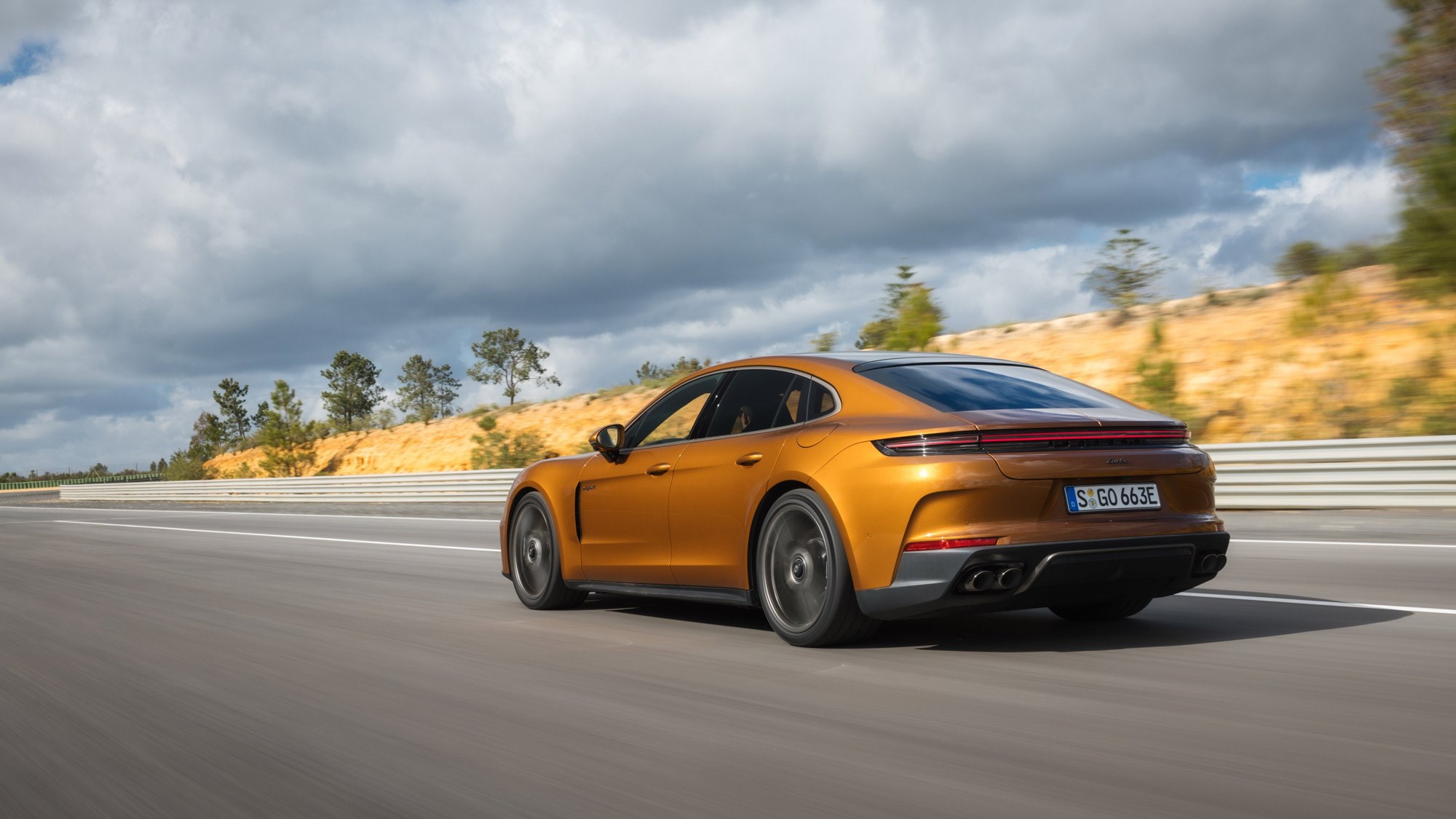
Visually, there’s a lightly tweaked front and rear, with a more pronounced LED light bar being a highlight. There’s also a new ‘Turbonite’ package, not surprisingly exclusive to the Turbo, which brings a range of grey-coloured elements. Even Porsche’s renowned yellow and red logo is replaced by grey.
What are the specs?
If you want a Panamera hybrid, there are three versions to go for – more than non-hybrids, interestingly. The 4 E-Hybrid and 4S E-Hybrid kick things off and each use a 2.9-litre turbocharged V6 producing 464bhp and 537bhp respectively.
But the star of the show is the Turbo E-Hybrid. It’s carried over from the previous Panamera, and uses a 4.0-litre turbocharged V8 paired with an electric motor for a combined 671bhp and monstrous 686lb ft of torque. Getting to 60mph takes just 3.2 seconds, and given the chance it would surge to a 196mph top speed.
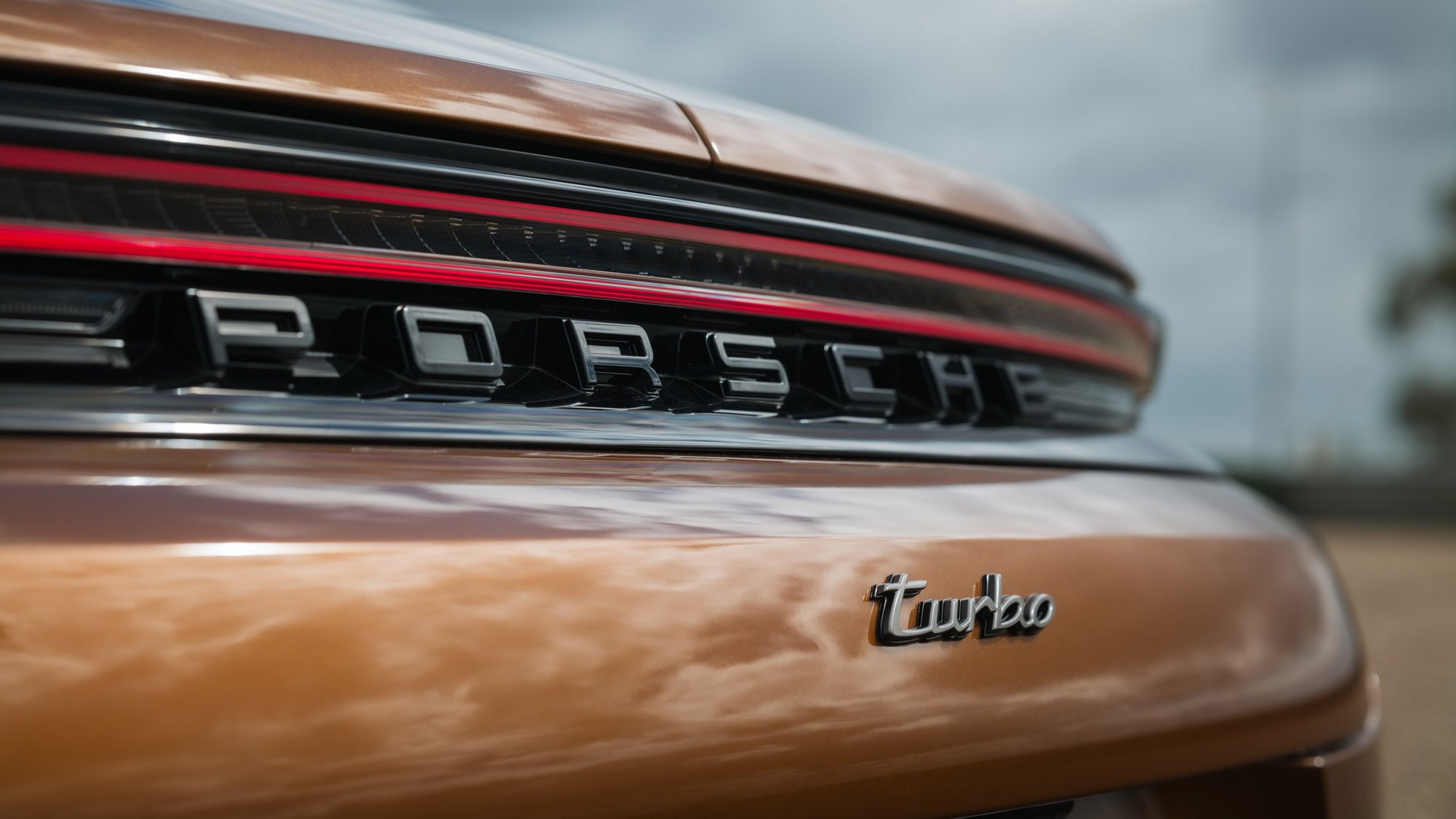
Two standard petrol models remain available, which you can read about in our separate review.
Range and charging specs
Regardless of which new Panamera hybrid you go for, each comes with a much larger 25.9kWh battery, usefully topping up the electric range to a claimed 58 miles, though that’s based on city driving. Expect more like 35 miles, but that’s still a useful improvement on the previous car, which would struggle to manage even 20 miles without waking the engine.
A larger 11kW onboard charger is also now included, reducing the charging time to two hours and 40 minutes in the quickest instances.
How does it drive?
Now, there must be the caveat that our driving of the Turbo is based on a few laps of the Monteblanco circuit, along with a few dedicated activities Porsche had set up to highlight the extremities of what Active Ride is capable of.
But let’s start with the powertrain itself, which is savage. It almost turns your stomach with how quickly it gathers speed, with the brilliant V8 soundtrack to go with it. It’s worth noting it is, for the time being at least, the only eight-cylinder Panamera you can buy.
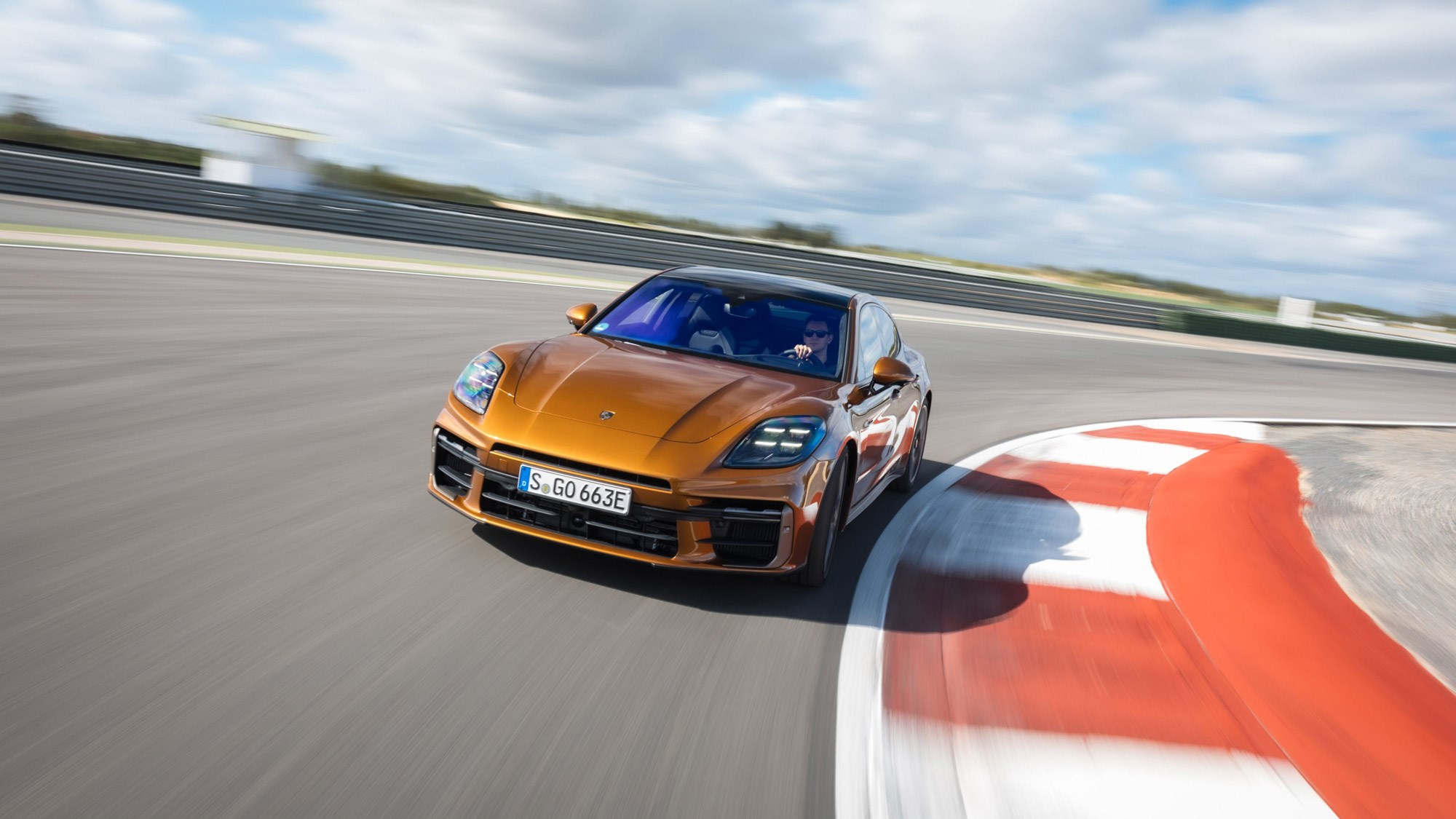
Even on a soaking-wet circuit that felt more Silverstone than Seville, it’s clear to see the Panamera’s brilliance, at least for a car of this size. No other luxury car would feel as home on track as this Porsche, and while the Active Ride setup is incredible in its ability to lean the car into a corner, it feels natural to drive.
But the benefits of this clever setup for us seem more pronounced from a comfort perspective. If you slam on the brakes, there’s no leaning forward on the front axle. Similarly, if you floor it, the front doesn’t lift – rather keeping flat and near-level. Another perk of the setup is that as soon as you touch a door handle the car quite literally jumps up instantly to aid entry and exit. You’ll find similar on an Audi A8.
What about the interior?
New infotainment, a fully digital instrument cluster and an optional passenger touchscreen are the headline changes to the interior.
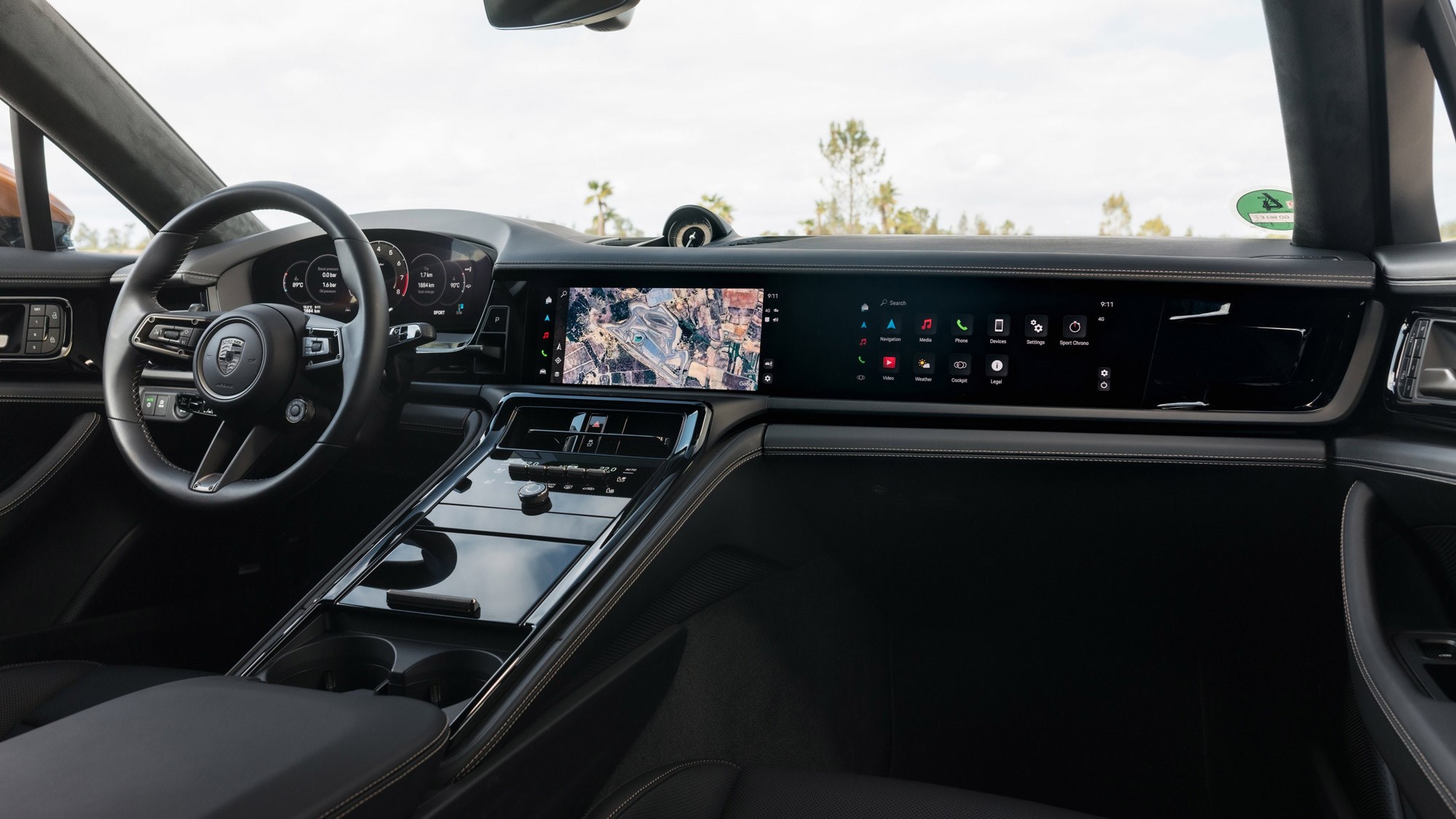
By and large, all are effective and help to modernise the interior without leaning too far into a screen-dominant affair. Praise the lord the climate controls are still integrated into the centre console panel, while the quality is up to typical Porsche standards. The gloss black centre console likely won’t look so glossy in a few years, though.
Before you buy (trims and rivals)
Prices for a standard petrol Panamera come in at £79,990, but the cheapest plug-in hybrid starts from £90,300.
The Turbo E-Hybrid commands a rather significant premium, and starts from £141,400, pushing it into very different territory. A Mercedes-AMG GT 4-Door with its new plug-in hybrid setup is probably the closest thing to a rival, as will BMW’s upcoming hybrid M5.
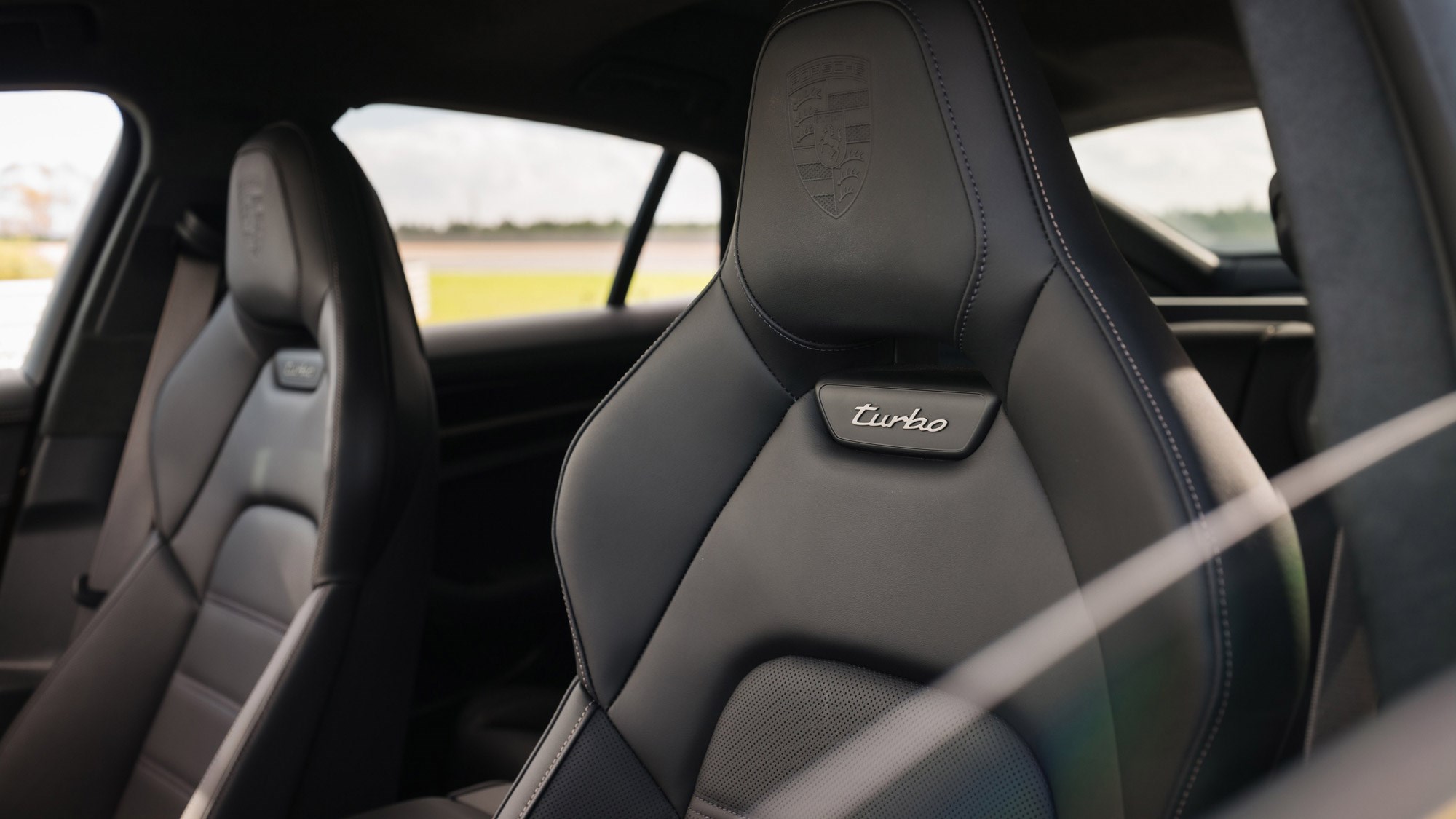
As with any Porsche, the options list can be your enemy and your friend. It’s possible to spec a Turboup to £225,00, which is frankly ridiculous. But the Active Ride, even at a fairly sizable £7,000, should be one box you do tick.
Verdict
More time needs to be spent with a Panamera equipped with Active Ride, and it will be particularly interesting to see how it copes with the UK’s increasingly worsening UK roads, where the benefits could be exceptional.
But first impressions are positive, and Active Ride and the scale of its benefits are much more obvious than you might expect. The savage V8 Turbo E-Hybrid also remains sensational in its performance, but now with scope for lower running costs. But whether that’s worth £40,000 more than a standard hybrid Panamera is much more open for debate.